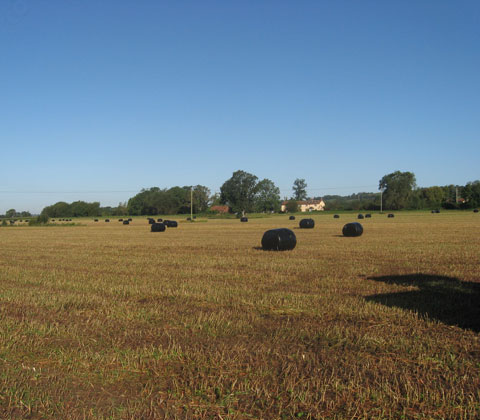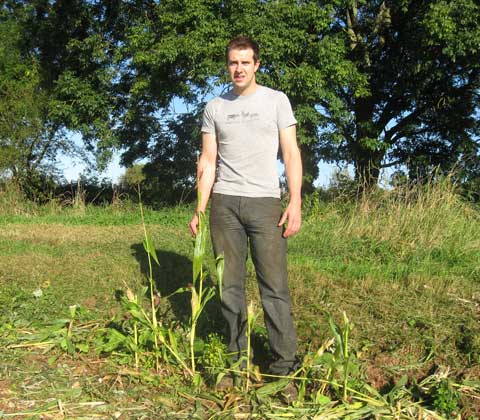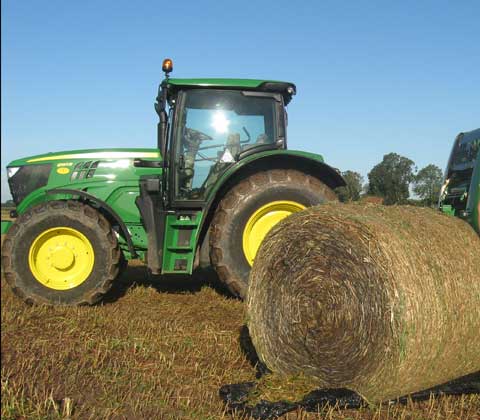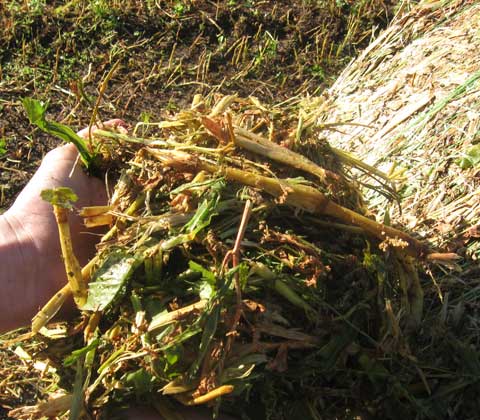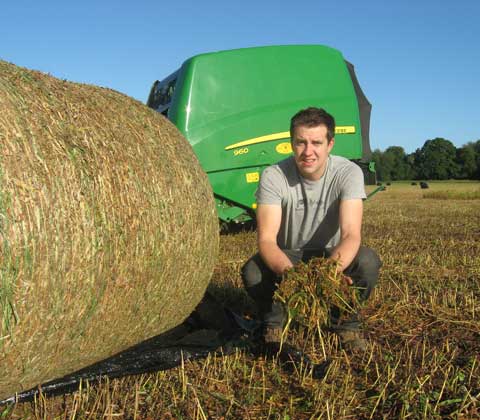Baling maize early could offer solution to stunted crops
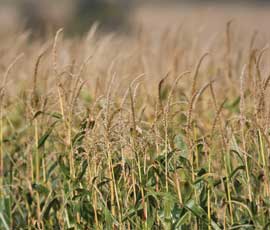
Baling maize silage could offer a solution for livestock producers looking to get the most from stunted crops or desperate for forage.
Somerset farmer and contractor Nick Cavill baled 12ha of flood-damaged maize and has been exceptionally pleased with the results.
“The crop had been flooded on three occasions through the summer and up until the start of August was only four inches high and yellow. But after a bit of sun it shot up to three foot in six to eight weeks,” he explains.
However, after realising the crop wouldn’t grow any further after the start of September, Mr Cavill decided to try and bale the crop as an experiment.
“I thought it was a shame to let the crop go when it was three foot high with cobs, and a bit green,” he says.
| Baling maize – for whom is it relevant? |
|---|
|
The maize was bought from a local farmer who had to write off a further 12ha of the crop due to water damage and Mr Cavill agreed to pay £10 a bale for what was harvested.
He went over the field with a 10-foot mower and conditioner, keeping three inches off the ground. A chopper/baler then picked up the mowed lines, ensuring the crop was picked up one inch off the ground to avoid soil contamination.
“We were taking in cobs of six to eight inches in length. You couldn’t really do any bigger than this, as it would be too big for the baler.”
Mr Cavill believes baling poorer maize crops could soften the blow for those farmers potentially having to write off a crop that cost about £200/acre to grow. But he believes the process probably wouldn’t be worthwhile if cobs or plants are small.
“I would say the crop would need to be more than two foot but no more than four foot high to be worth baling. You also need a very good baler, as the crop is so wet,” he says.
Having harvested 100 bales from the 12ha, the crop will now be fed to the 20-month-old dairy heifers contract reared by Mr Cavill at Manor Farm, Godney.
“The bales look beautiful – rock hard and very sugary and sweet,” he says.
“This maize will be beneficial to these February calvers as they could do with a bit more condition. I fed them a bale as a test, and they loved it. I’ll feed the rest to them with grass silage in round feeders when they go on to kale in November.”
Analysis is yet to come back, but Kingshay technical manager Peter Shipton estimates the crop will analyse similar to grass silage, but with lower protein levels.
“This is not a great feed for dairy cows, as it is a relatively low-quality feed, with plenty of sugar but not much starch.
“I would target it as a youngstock feed, although it could be a bulk filler in any ration, as long as the diet is balanced accordingly.”
Find out how the 2012 maize harvest is going on our dedicated Maize Watch page

